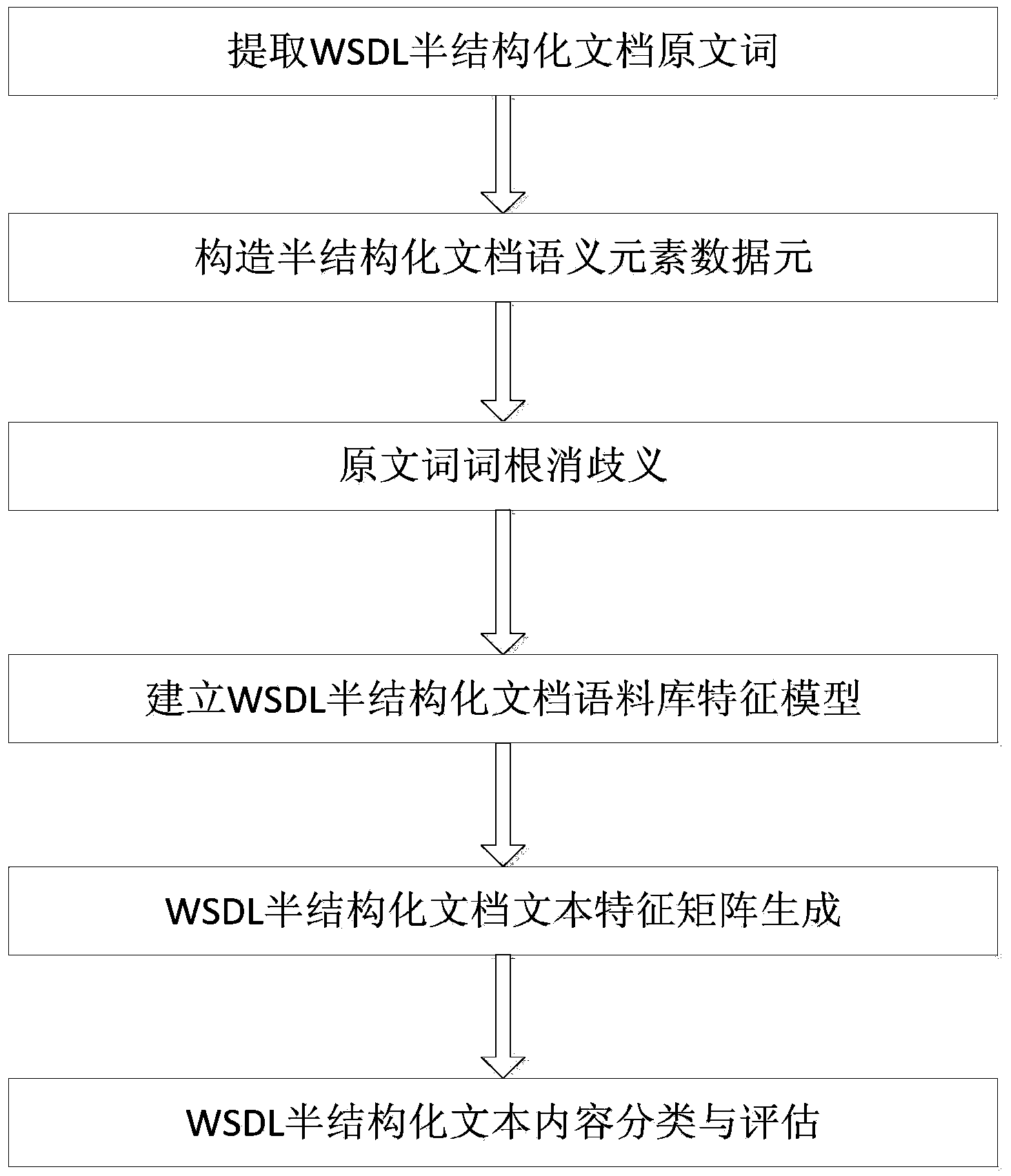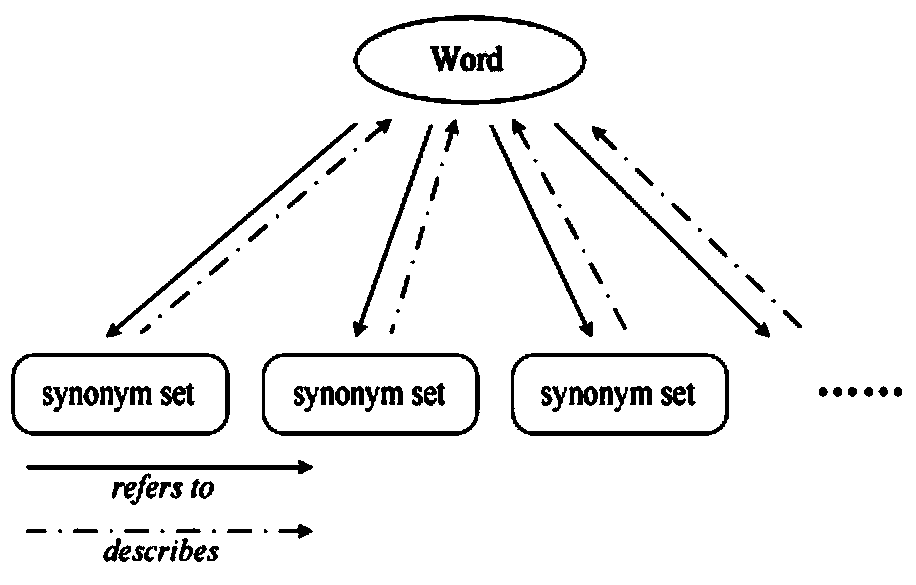WSDL semi-structured document similarity analyzing and classifying method based on semantic model
A similarity analysis and semi-structured technology, applied in the field of similarity analysis and classification of WSDL semi-structured documents, can solve problems such as text classification errors, ignoring vocabulary terms and purifying common information, and achieve the effect of eliminating root ambiguity
- Summary
- Abstract
- Description
- Claims
- Application Information
AI Technical Summary
Problems solved by technology
Method used
Image
Examples
Embodiment Construction
[0040] The present invention will be further described below in conjunction with the accompanying drawings and embodiments.
[0041] Such as figure 1 As shown, it is a flowchart of the present invention, a semantic model-based WSDL semi-structured document similarity analysis method, including the following steps:
[0042] Step 1: Find one or more roots corresponding to each original word in the original document in turn, use the WordNet dictionary to obtain one or more synonym sets of the root corresponding to each original word in the document, and use each synonym set as a semantic element;
[0043]Through the analysis of the document corpus, relying on word meaning statistics will lose the interactive information involving synonyms. Therefore, we use the WordNet dictionary (English vocabulary database) to establish the original words of semi-structured documents based on WSDL. A table in the WordNet dictionary is represented by a string of ASCII characters, and the meani...
PUM
 Login to View More
Login to View More Abstract
Description
Claims
Application Information
 Login to View More
Login to View More - R&D
- Intellectual Property
- Life Sciences
- Materials
- Tech Scout
- Unparalleled Data Quality
- Higher Quality Content
- 60% Fewer Hallucinations
Browse by: Latest US Patents, China's latest patents, Technical Efficacy Thesaurus, Application Domain, Technology Topic, Popular Technical Reports.
© 2025 PatSnap. All rights reserved.Legal|Privacy policy|Modern Slavery Act Transparency Statement|Sitemap|About US| Contact US: help@patsnap.com



